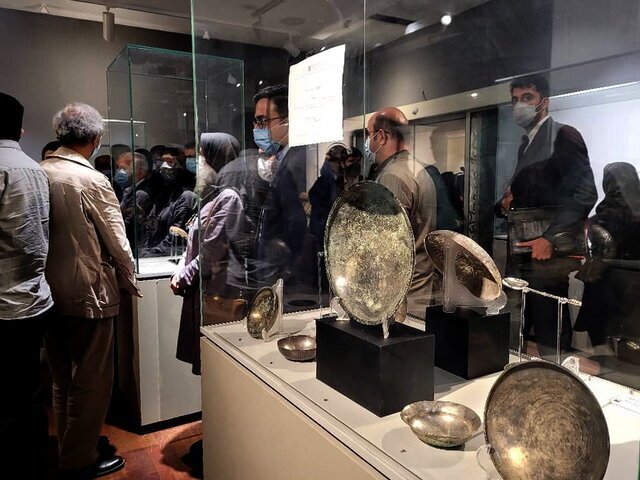INSUBCONTINENT EXCLUSIVE:
collection was handed over to the National Museum almost a week ago, during this time, the archaeological authenticity of about one thousand
official explained.Moreover, the collation includes a variety of coins from the Achaemenid era onwards, bracelets, necklaces, crossbows,
swords, and arches, the official noted.The majority of the donated objects are made from iron, bronze, gold, and copper, Nokandeh
added.Luristan Bronzes comprise small cast objects decorated with bronze sculptures from the Early Iron Age, found in large numbers in
Lorestan and its neighboring Kermanshah province, in western Iran
Lorestan was inhabited by Iranian Indo-European peoples, including the Medes, c
Cimmerians and Scythians intermittently ruled the region from about 700 to 625 BC
The Luristan Bronzes noted for their eclectic array of Assyrian, Babylonian, and Iranian artistic motifs, date from this turbulent
period.Lorestan was incorporated into the growing Achaemenid Empire in about 540 BC and successively was part of the Seleucid, Parthian, and
Sasanid dynasties.In many ways, Iran under Sassanian rule witnessed tremendous achievements of Persian civilization
Experts say that during the Sassanid era (224-651 CE), the art and architecture of the nation experienced a general renaissance
Iran, to its World Heritage list
In that era, crafts such as metalwork and gem-engraving grew highly sophisticated, as scholarship was encouraged by the state; many works
from both the East and West were translated into Pahlavi, the official language of the Sassanians.In terms of coins and coinage, according
to Encyclopedia Iranica, standardized units of metal used as a medium of exchange were first introduced into Persia during the reign of
Achaemenid Darius I (521-486 BC).The essential advantage of using metals for currency, apart from durability, is that they can be shaped by
Casting, therefore, has always been an integral part of the coin manufacturing process.The Achaemenid [Persian] Empire was the largest and
most durable empire of its time
The empire stretched from Ethiopia, through Egypt, to Greece, to Anatolia (modern Turkey), Central Asia, and India.Chock-full of priceless
objects showcasing the juicy history of the nation, the National Museum showcases ceramics, pottery, stone figures, and carvings, mostly
taken from excavations at Persepolis, Ismail Abad (near Qazvin), Shush, Rey, and Turang Tappeh to name a few.The main building of the
double-winged mythical creatures

